![]() Posted by Cameron Francis
on
20 Jun , 2022
in
Weekly Marketing News
Posted by Cameron Francis
on
20 Jun , 2022
in
Weekly Marketing News
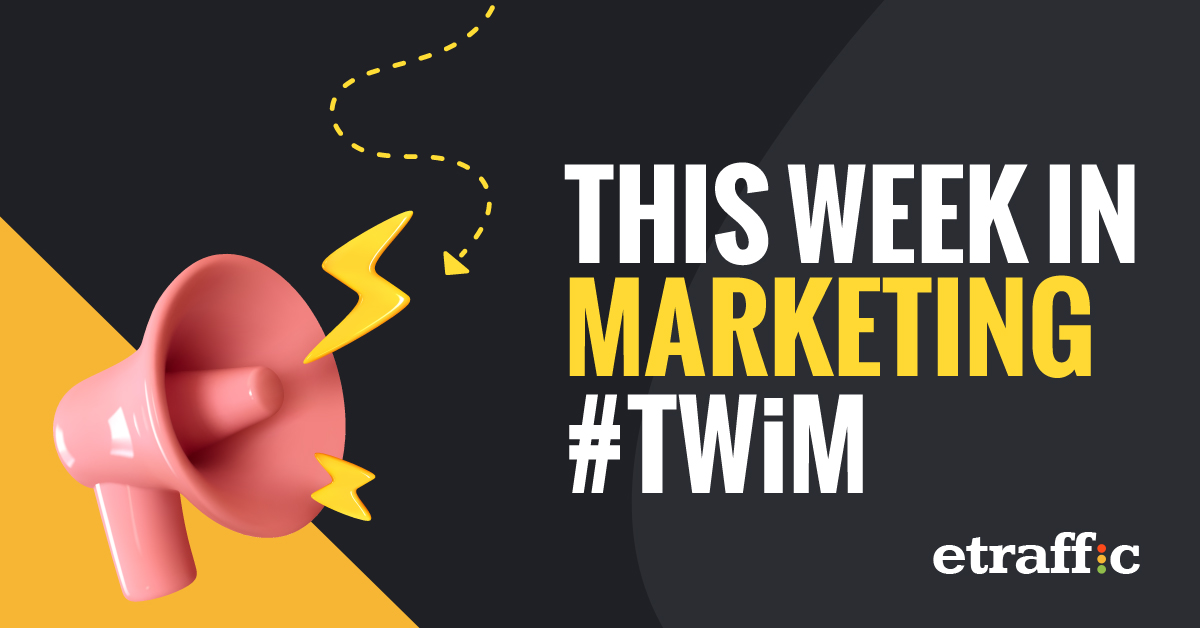
This Week in Marketing #TWiM 20th June 2022
- Google Introduces New Rules For Financial Services And Products Advertisers In Australia
- Google May 2022 core update is finished rolling out
- Ahrefs Launches Yep – A New Search Engine – https://yep.com/
- Tips for Brands Looking to Jump Into the Metaverse
- Meta Abandons Several Projects In Order to Cut Costs
- Meta Developing New ‘Basic Ads’ Product for Facebook Due to Data Privacy Concerns
- Instagram Announces the Expansion of Its Sensitive Content Control Options
- Snapchat Shares New Data on How AR and Camera Ads Can Increase Campaign Performance
- LinkedIn Highlights Rising Conversation in the App with New Ad Campaign
- LinkedIn Expands its Streamlined ‘Boost’ Ad Option to LinkedIn Events
- Twitter to remove nofollow attribute from links in tweets
- Twitter announces Product Drops for merchants
- TikTok Adds New Screen Time Breaks & Usage Tracking Tools
- Digital Avatars Now Available In TikTok
Google Introduces New Rules For Financial Services And Products Advertisers In Australia
In September 2021, Google rolled out a new policy for advertisers in the financial products and services category in the UK. Advertisers were to provide documentation confirming that they had authorisation from the UK Financial Conduct Authority to conduct business before they could use Google’s platforms to run advertisements. Google has now expanded this policy to include Singapore, Taiwan, and Australia. This policy is being implemented in partnership with the local authorities in each region.
Financial services advertisers in these regions will not only have to complete Google’s advertising verification program but they will also have to demonstrate that they have received authorisation from the relevant financial services regulator in their territory. The verification process will begin at the end of June and this new policy will come into effect in these markets on August 30, 2022. Without the verification, no advertiser would be allowed to run ads promoting financial services.
Google is attempting to align its systems with the local laws in respective territories to make sure that its platforms are not being used for any illegal activities. Google has said that since the launch of the policy in the UK, they have banned close to 60 million ads that didn’t meet their new policy criteria.
Google May 2022 core update is finished rolling out
Google has announced that the core update has finished rolling out on June 9, 2022. It started rolling out on May 25, 2022, and data suggests that it was a pretty big update. As per the data tracked by industry insiders, the biggest volatility happened around June 5. Now that the update has been fully rolled out, you shouldn’t be experiencing any volatility related to this core update.
The May 2022 core update rollout is now complete.
— Google Search Central (@googlesearchc) June 9, 2022
Google advised that if you have lost traffic due to the core update, it does not mean that something is wrong with your website or web pages that have specifically lost traffic. You do not need to take any specific action to recover your rankings. Continuing with their stance, Google hasn’t provided specific advice on recovering your lost rankings. It maintains that webmasters should always focus on providing the best content for the users as that is what their algorithms seek.
Overall, the May 2022 core update began on May 25 and finished on June 9. Now, it’s time for you to examine how your site has fared and the steps you should take to improve your website in the future.
Ahrefs Launches Yep – A New Search Engine – https://yep.com/
Ahrefs, the SEO industry giant, has launched its own search engine called Yep. They announced the launch in 2019 and have gone live now.
They claim to have invested $60 million to launch this new search engine. It’s a general-purpose search engine and is likely to be available in most languages and in all countries in the near future.
There are two main USPs of this new search engine:
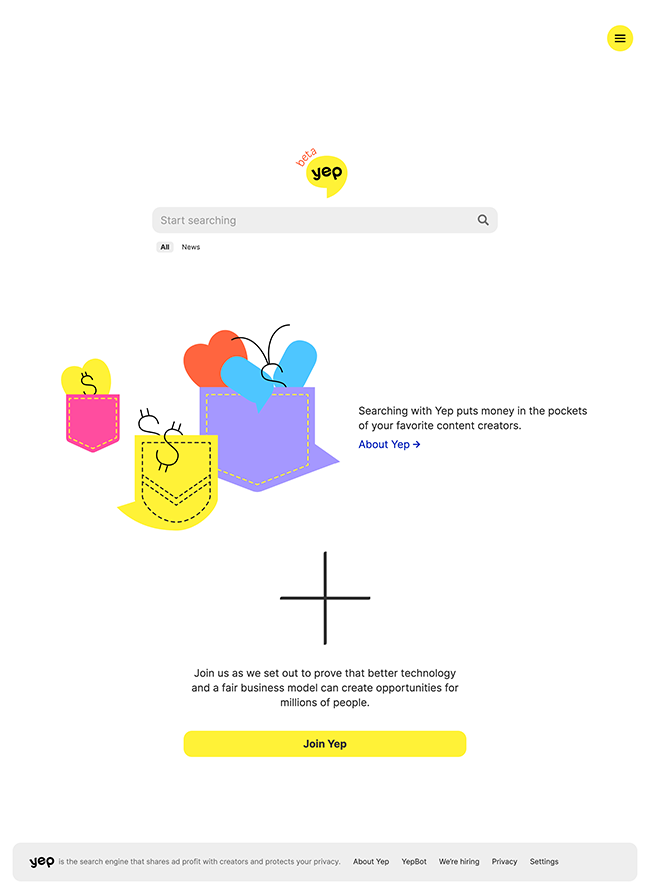
- Privacy
- Profit-sharing
Yep is a privacy-focused search engine where they won’t be collecting any personal information such as your age, gender, name, your location or any other data. As far as profit sharing is concerned, Ahrefs is proposing a 90:10 profit-sharing model where 90% of the advertising profits will be shared with the content publishers.
Google provides a lot of data in the search results which means that users don’t need to go to the website. This results in traffic/revenue loss for the publishers. Yep plans to set itself apart by sharing advertising profits with content creators.
Despite all these positive advancements, Yep has a long way to go before it is considered a serious alternative to Google.
Tips for Brands Looking to Jump Into the Metaverse
The Metaverse is expected to be big and every other brand is looking for ways to become a part of it. Wendy’s introduced Wendyverse earlier this spring. It is the first horizon world of the brand.
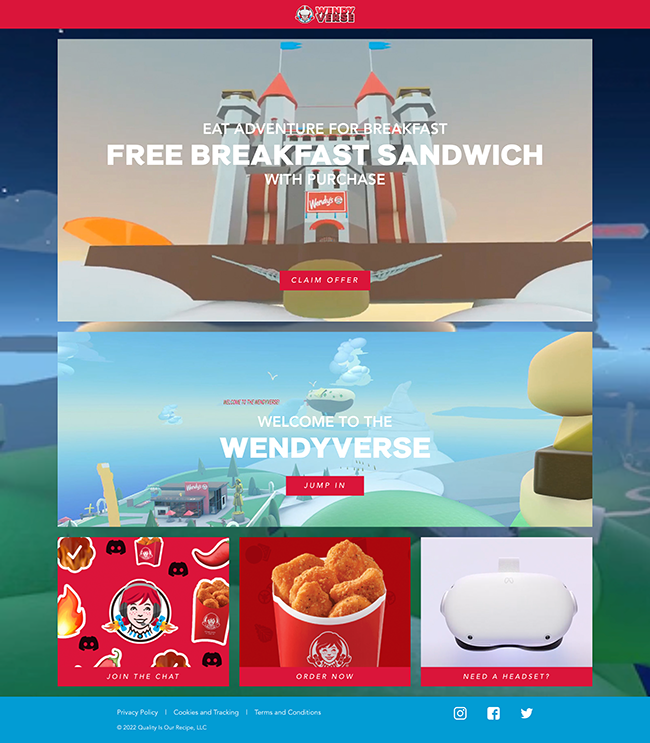
If you are also planning to become a part of Metaverse, here are a few tips from Carl Lorendo, Wendy’s Chief Marketing Officer, for you to consider:
- Define your reason — You shouldn’t be part of Metaverse only because everyone is jumping on this new trend. If you have already invested time and money to build an online community, it will be easier for you to invite the fans to your Metaverse world.
- Fans first – Keep your focus on the fans. Try to enhance their experience. You need to create an immersive experience for consumers to interact with your brand to make them want to come back.
- Empower the creators – It is important to empower creators and allow them to create an authentic experience for the members. You need to trust creators and their imagination to ensure a strong engagement from visitors.
Meta Abandons Several Projects In Order to Cut Costs
Meta’s recent changes to its product roadmap have caused some controversy among the public. The company announced that several of its hardware projects are on hold or delayed, as well as scaling back on audio social developments.
We're going to ship wrist wearables and AR glasses that bring completely new tech—like EMG— to market. The path to groundbreaking products is not a straight line. As is common in our industry, we iterate on multiple prototypes in parallel & shift resources as we learn.
— Boz (@boztank) June 9, 2022
Meta has announced the following:
- Pausing the dual-camera smartwatch development project
- They will no longer produce the Portal smart display device as a consumer product, but instead, continue development for business use only
- They will be delaying the release of its new AR glasses product, which was originally set to come out in 2024.
Meta is focusing on reducing costs as it continues to develop its metaverse-aligned initiatives. However, the recent changes in data privacy have made things more difficult for them as they deal with increased regulation while also feeling economic pressure.
As a result, their spending has slowed down. Meta, just like other platforms, is preparing for a bumpy road in the second half of this year as they continue to face increased competition.
Meta Developing New ‘Basic Ads’ Product for Facebook Due to Data Privacy Concerns
The new Meta ad campaign will use a lot less user data for targeting, which means that the reach and performance of your advertisement are relative to how much engagement is generated.
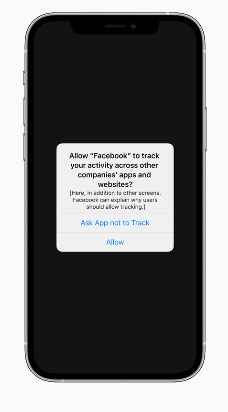
This could potentially help reduce costs when you create good ads because more people interacting with them helps fuel lower-cost exposure in the algorithms.
Meta’s new targeting options are an interesting take on traditional ad offerings. They can offer more specific information than TV or magazine ads, but their reach is still enough to reel in advertisers who want that kind of targeted marketing campaign with reliable results. It’s all about knowing your audience and what they’re interested in before embarking on your campaign.
We don’t have all the details yet, but it was reported that Meta originally planned to launch their Basic Ads product in January 2019. However, they missed this deadline and are now testing out this new advertising option within Europe first, where it will fit alongside GDPR protection efforts.
Instagram Announces the Expansion of Its Sensitive Content Control Options
Instagram has recently made the initiative to expand its Sensitive Content Control options even further than before to provide safer, more enhanced experiences for all users.
The control features, first made widely available in July of 2021, initially covered the Explore section of Instagram but will now allow Instagram users to have greater control over the content made visible to them while browsing the popular social media app.
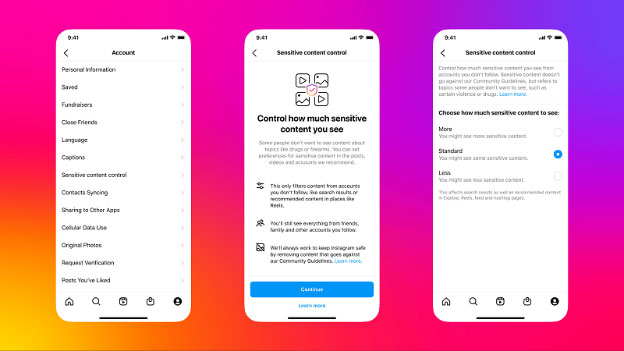
Aside from the initial Explore feature, users logging into their Instagram accounts can control the types of sensitive content they’ll see throughout the social media platform, which includes areas like traditional searches, reels, hashtag images, and even in-feed recommendations. Users should begin to notice the change within the next several weeks.
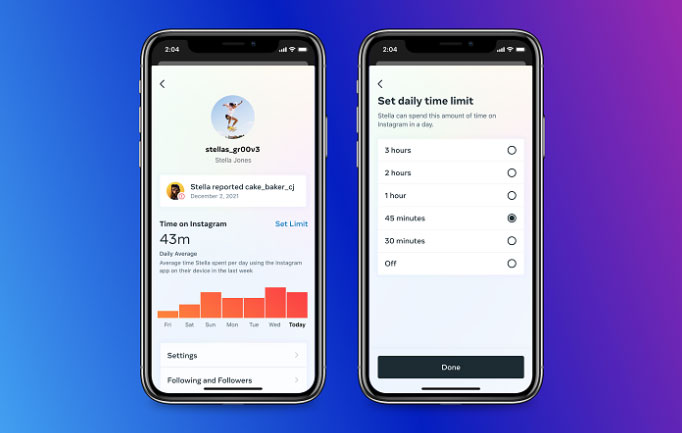
There are currently three options available within the sensitive control settings, including More, Standard, and Less, of which Standard is the default for all accounts.
However, users can select More if they’d like to see additional sensitive content or Less if they’d like to see less sensitive content throughout their accounts.
As a result, Instagram hopes to drastically reduce exposure to harmful and sensitive content that many people don’t want to see while using the social site, fostering a safer environment for younger groups of people most often using Instagram.
Snapchat Shares New Data on How AR and Camera Ads Can Increase Campaign Performance
Snapchat’s new research into what types of ad formats are most effective for driving user response and boosting brand awareness has revealed some interesting information, including the use of AR tools to assist in boosting brand awareness.
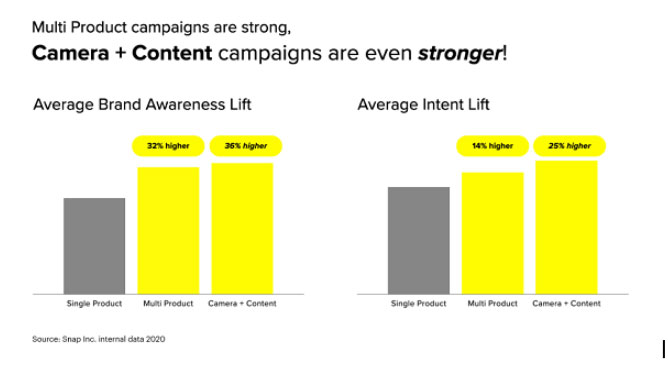
Firstly, the research shows that by utilising multiple ad formats within your campaign, you can drive better results. The Snap Camera amplifies this effect even further with the ability to increase exposure for ads through increased usage of the app’s features such as taking pictures and video clips which are great ways for marketers to capitalise on certain schemes.
Secondly, the study found that consumers felt more informed by AR ads than pre-rolls, and they also understood the message better. Snapchat noted different tools have different effects depending on what type of product or service is being advertised with them.
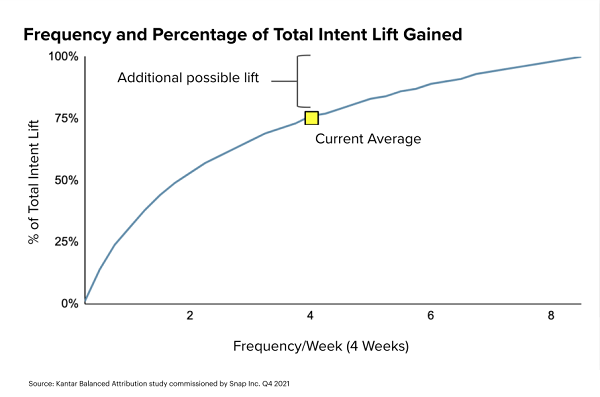
So it’s not just using this form for advertising purposes, but figuring out which ones will work best overall in order to get your desired response.
Intrigued? You should be! The data points above are a few interesting findings that could factor into your strategy for connecting with Snap’s audience, and will surely give you an edge over other brands.
LinkedIn Highlights Rising Conversation in the App with New Ad Campaign
LinkedIn is using a dinner table conversation to highlight the power of community on their platform. As people talk about what they are doing in professional settings, LinkedIn comes into focus as an important part and guiding force in more ways than one!
We all know LinkedIn is a great way to find jobs and make connections however, it’s not necessarily just for professional networking anymore! Therefore, in order to create an engaging campaign, we should focus more on what makes LinkedIn unique – its ability to facilitate new career discussions as well as other opportunities via InMail or audio rooms.
It’s an interesting idea and one that seems like it could be helpful for both your career development as well as promoting LinkedIn.
LinkedIn Expands its Streamlined ‘Boost’ Ad Option to LinkedIn Events
LinkedIn is now expanding their streamlined Boost option to amplify listings for events in the app. This new feature aims at simplifying ad spending, helping marketers capitalise on early traction with ads that expand their messaging and reach out to more people who are interested.
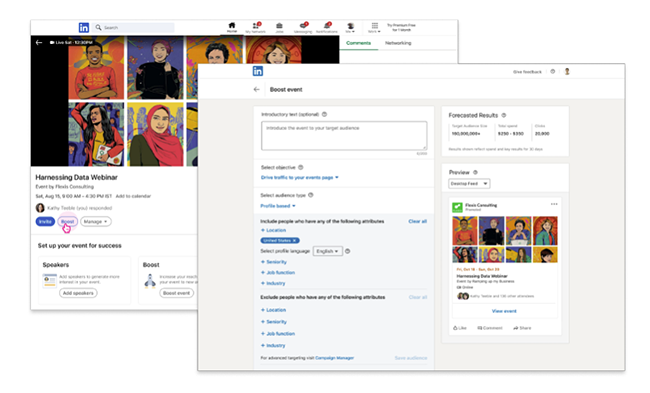
LinkedIn events are a great way to engage your followers on the platform. With over 24,000 events created every week by users looking for inspiration and guidance in their professional lives – you should take advantage of this opportunity.
With the rise of remote access, it’s not surprising that LinkedIn is capitalising on this by providing event tools. This could be worth considering for your next approach!
Twitter to remove nofollow attribute from links in tweets
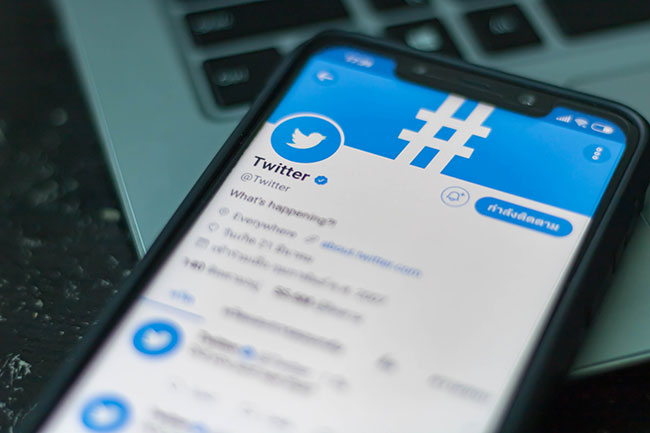
Twitter’s recent change to remove the nofollow link attribute from posts has left many wondering if this was done on purpose or not. It will be interesting to see how search engines such as Google value links coming from Twitter in future updates.
The internet was a different place back in 2008 when Matt Cutts announced on his blog that Twitter had started adding the nofollow attribute to bio sections of their site. It only took one year before this policy was extended throughout all posts and other parts or pages within “the twitterverse.”
We don’t really know if Twitter purposely removed the nofollow attribute on links within tweets, but it’s possible that Google may start counting these. It is hard to say for sure how other search engines will treat them yet as well, but for now, we can only wait and see what happens.
Twitter announces Product Drops for merchants
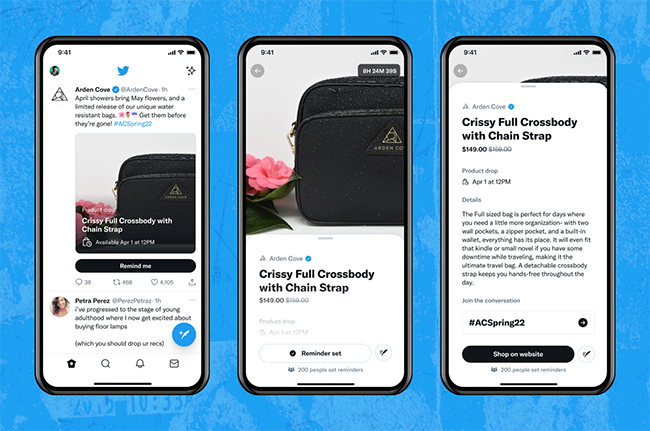
The brand new Product Drops feature on Twitter will help merchants engage their followers and stay on top of product releases. With this innovative way to communicate, brands can notify customers when they launch the newest item in stores or online.
No longer do you need to browse social media sites like Facebook or Instagram in order to purchase from a merchant’s online store. All it takes is tapping on their “Remind Me” button and you’re ready to go.
Although this feature is a good start to increasing brand engagement, it may miss the mark with many of its fans. Additionally, people who don’t use Twitter or other social media platforms, are still able to follow brands through organic search results and email lists which means that these followers will never know about all your company’s promotions.
TikTok Adds New Screen Time Breaks & Usage Tracking Tools
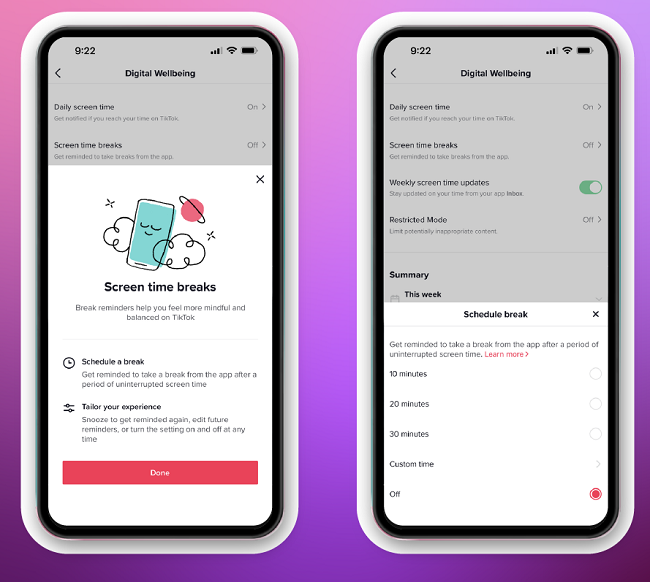
TikTok is introducing new tools to help you track and manage the time that passes in their app, with break reminders limiting endless scrolling on the feed as well as a dashboard monitoring screen usage. The newest update also implements compulsory notifications for younger users after certain periods of engagement have passed.
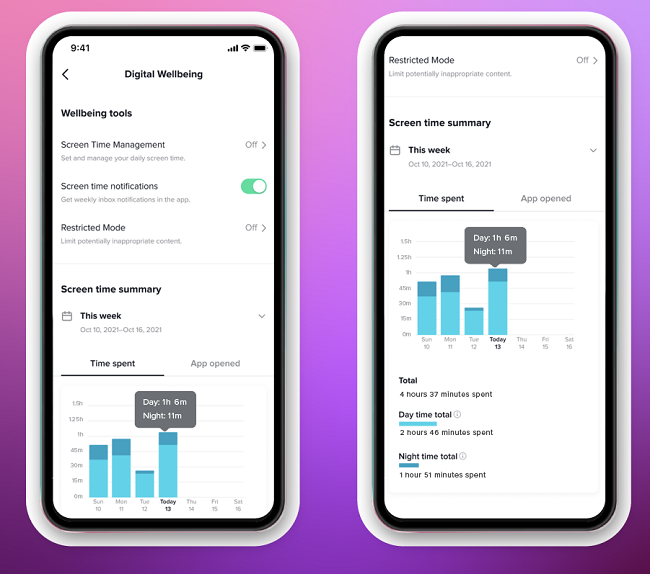
TikTok has introduced this new feature that will prompt users to set break reminders in order to avoid spending too much time on the app. You can also choose from 10, 20 or 30-minute intervals for your scheduled breaks and they’re available both manually as well automatically so at least you’ll know when it’s time to get up off your phone!
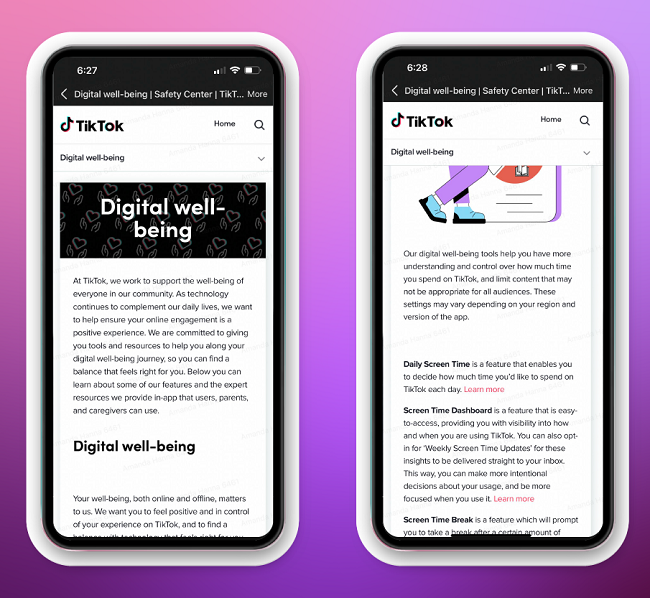
With the rise of social media, many people are spending more time online. In an effort to combat this trend and keep its users safe from harmful content, TikTok has also implemented enhanced screen time tracking tools that provide parents with stronger accountability measures for how much youth spend scrolling through videos.
Digital Avatars Now Available In TikTok
TikTok is now allowing App users to create their own avatar through the effects panel in the camera view. Once the users create their avatar, their character will mimic their actions. The app also features a miniature avatar functionality. In the miniature mode, users will be able to overlay their characters on the clips.
@effectmasterwannabe Tiktok avatar is now available. Publish your video with your new TikTok avatar! 🤩 #TikTokAvatars♬ 原声 – Effect Master
Eventually, users are most likely to choose tools that offer the most functionality, customisability and universal availability allowing users to take their characters with them across various platforms and apps. Dedicated avatar creation tools such as Ready Player Me are likely to become much more important in the future.
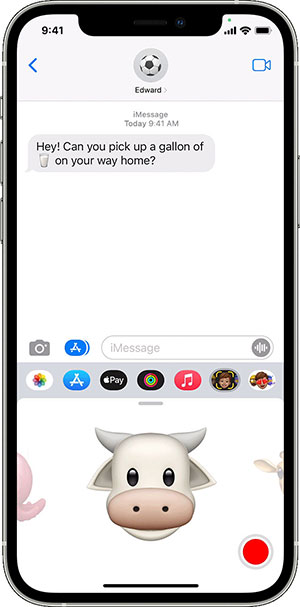
Meta is also researching ways to create more photorealistic avatars though it remains to be seen whether people would prefer to look like their real selves or a more customised version of themselves. While TikTok is far behind other platforms in this space, everybody has to start somewhere and it’s never too late to start.
![]()






